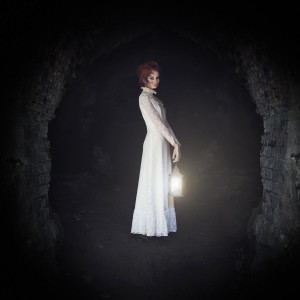Avoiding Stereotypical Characters
I’ve avoided these “how to write” articles, because I don’t think of myself as an expert by any means. I don’t even really consider myself an adept writer. But I have written two books that weren’t complete failures. To some extent, I must know a little bit about writing.
I hope.
Anyway, I’m way more of a reader than a writer. And I think any reader can testify to the sheer obnoxiousness of stereotypical characters. They fall flat. They’re not believable. They make you want to skip pages and get to the good parts. Or, worse yet, they make you put the book down.
Stereotypical characters aren’t interesting or dynamic. They don’t make for a good plot; they need a good plot to make them. But I truly believe that a book is only as good as its weakest character. No matter how great the plot is or how steamy the sex scenes are or even how proficient the writing is, bad characters will ruin a book.
And maybe the character isn’t bad throughout the entire book. Maybe they just have a few reactions or motivations that aren’t true to the character or are too typical. It only takes a few for a reader to wrinkle up their nose like they caught a whiff of a nasty mastiff dog fart. I recently read a book where I loved the main female character. She was great, independent, humorous, and strong. But at the end of the book, the character had one reaction that was so freaking stereotypical of a female hissy fit that the whole book was ruined for me. I’ll keep reading the series, because I want to like the character again. Hopefully I will.
But how do you avoid contrived characters?
Stephen King writes amazing characters. I’m always blown away by how original he makes them. He gives them cool quirks that make them unique, but he also surrounds a character with objects or pets or clothes that make them even more real-life.
So it’s not just the nerdy journalist that makes a believable character, but also her worn corduroy jacket and cute corgi dog. What would your character choose to wear day-to-day? What kind of decorations do they have in their house? Obviously as writers we can’t spend thousands of words talking about wardrobe choices, but dropping little hints every now and then makes for good filler.
Every writer needs to have a deep and true understanding of their characters. I’m very fortunate on this end of things. I’ve spent the last six years working on the same story. I understand how my characters will react in certain situations; I know what they will say or do. But there is a level of consistency that needs to be apparent throughout the book. Your characters need to stay true to themselves in every situation in every chapter.
Veronica Roth does this so well in Divergent. Tris is a character who has wonderful, unique reactions especially in scary situations. And she stays true to herself throughout the books.
Consistency is a product of good planning. Even if an author outlines or doesn’t, I think every book needs a written out character arc for all the dynamic characters. That way an author sees on paper every major event in the book and how the character is affected or changed. How a character changes throughout a story is based on how they react or handle the situation.
But what if you’re just starting a new project? How do you build an original character from the ground up? I’ve been working on this myself. I’m beginning to plan a new series, and the struggle of coming up with solid, non-stereotypical characters is a challenge.
This is just my assumption, but I think when you’re first starting with a story, you have to start with a stereotype. You can’t break the mold right off the bat. On the most basic level of character building, you have to base a foundation on some stereotypical ideas. But that has to be where it stops. Beyond the basic characteristics of a character, more unique parts must be woven in until they make up the predominant fabric of a character.
We have to start somewhere. I get that. You can’t invent a whole new type of person. Looking at myself and the type of person I am, I know I’m a bit shy and introverted. I’m a reclusive hermit type. But I come alive around my friends. Suddenly I’m transformed into the vivacious, funny, life of the party. But only around people I’m comfortable with. I can be bitchy and a bit of a hardass. Some situations in my life have made me that way. When I find myself in a hard spot, I find that I will revert to those asshole tendencies. It’s my armor, my defense. Gone is the introverted writer.
Same with the characters we write. Here’s where this post gets stereotypical, because how many advice posts have we seen where people say the best way to build unique characters is to give them a back story that molds their way of thinking, manipulates their reactions, changes their interactions with other characters? A thousand times.
But it really is the best way to create a unique character. But only if you can put yourself in that character’s shoes and think like they would. With an abusive past, how would a person react when threatened? Would they fight back or cower? Or something else entirely new? By giving a character a rich, fully developed past, a writer can be well equipped to have rich, interesting interactions and reactions with those characters.
I recently read Mia Sheridon’s Archer’s Voice. Her male character, Archer, had a tumultuous past. A critical injury left him mute. How do you have a fully developed, dynamic character who can’t speak? Well, you need to read this book. Archer is one of the greatest characters I’ve read in a long time, because Ms. Sheridon didn’t rely on dialogue or superficial attributes to make up Archer’s character.
I hope this post hasn’t sounded too preachy. I try to learn every day how to create vivid, living characters. These are some of the things I think about as I write. I hope they have possibly helped you or reaffirmed the way you build characters.
So to recap:
1. Think not just of personality traits to adorn your characters, but also their clothing choices, their pets, house decorations, type of car they drive, etc. Let their surroundings reflect and embellish your character.
2. Strive to truly understand your character beyond a superficial level. Beyond that, aim for consistency. Plan and plot their development. Once you understand where the character will end up, you can make their journey flourish.
3. Let their past make the character. Let them be their own person even if they’re sometimes shallow or annoying. No one’s perfect.
Happy writing!
Meg
Thanks to my website choice, I had to crop the main image of this post. Here is the full sized version. Image courtesy of Adrienne McNellis Photography.

